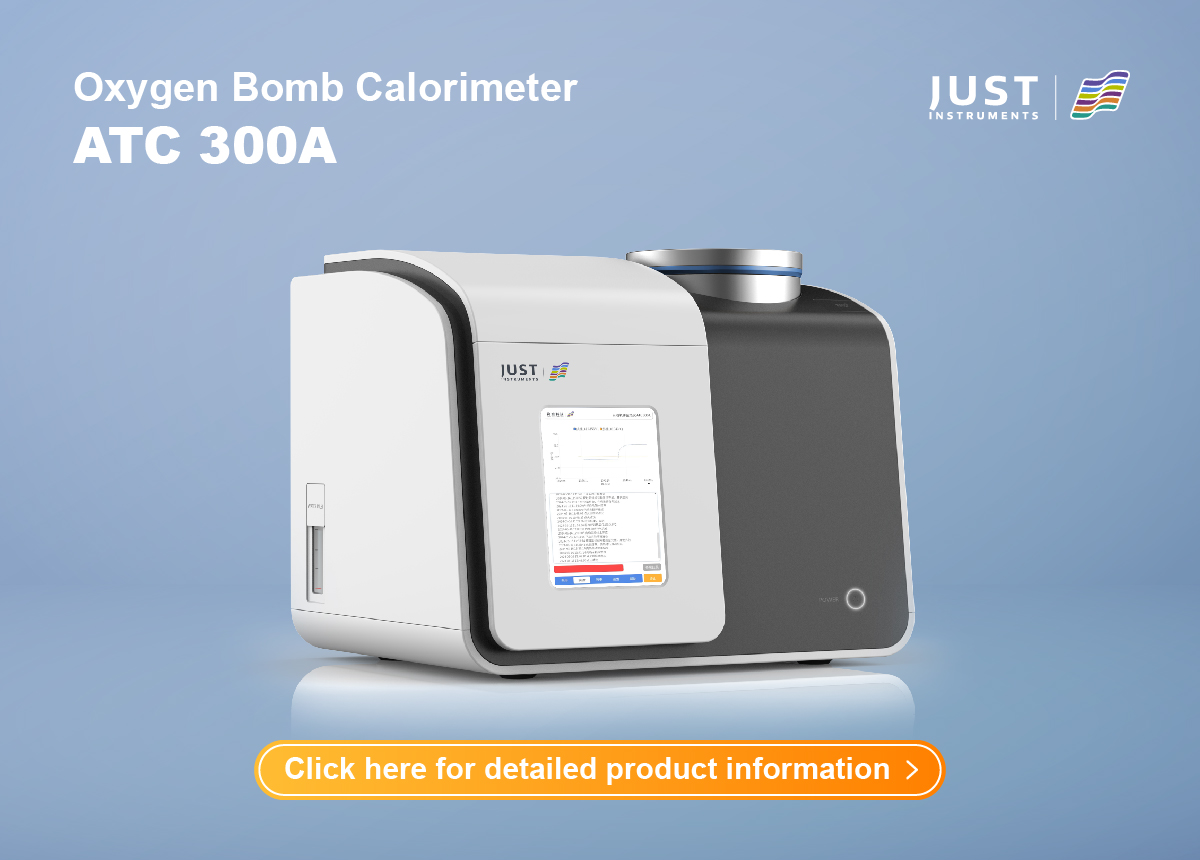Auto Calorimeter: Advanced Heat Content Measurement for Diverse Applications
The Auto Calorimeter is a cutting-edge device used to measure the heat content of various substances, including food, construction materials, and both solid and liquid fuels. It operates with precision, adhering to specific requirements to ensure accurate measurements. This fully automatic bomb calorimeter is perfect for applications across industries such as coal, petroleum, food, and materials. Its advanced features and automation make it an indispensable tool for professionals needing dependable calorific value data.
Recommended Instrument: Oxygen Bomb Calorimeter
The ATC 300A Oxygen Bomb Calorimeter is a cutting-edge device designed for the rapid and precise measurement of calorific values across various combustibles, conforming to standards such as GB/T384, GB/T 213, ASTM 4809, and ASTM D240. Its high-precision temperature control system ensures consistent accuracy and repeatability, making it a dependable choice for diverse industrial applications. The user-friendly interface simplifies the operation, accommodating both novice and experienced users with ease.
The ATC 300A is equipped with a range of automated features, including automatic bomb lifting, serial number recognition, and the handling of oxygen filling, release, and pressure detection. It also automates water volume measurement for the inner cylinder, minimizing manual intervention and ensuring reliable test results. The calorimeter boasts a sophisticated semiconductor cooling water circulation system with a high-efficiency filter, which controls water temperature for heating, insulation, and cooling. This system rapidly achieves thermal equilibrium, reducing environmental impact and improving test accuracy.
Specifications
Enhanced User Experience and Data Management
Featuring a touchscreen color LCD, the ATC 300A delivers stable software performance and real-time data visualization, making the testing process more intuitive. It provides automatic data correction, offering three calorific values: higher heating value, lower heating value, and bomb calorific value, while adjusting for the heat generated by ignition wire combustion and the calorific value of nitric acid, sulfur, and hydrocarbons. The advanced serial port technology allows for multi-unit control, ensuring experiments remain isolated from one another. The device can automatically generate, save, and retrieve charts and process data, while its dual control system integrates a color touchscreen with a PC-based operating system for synchronized monitoring, enhancing both safety and user convenience.
Environmental and Operational Specifications
The ATC 300A operates efficiently within a temperature range of 15°C to 30°C, with a maximum relative humidity of 80% without condensation. It supports ignition using either cotton thread or ignition wire, with a temperature resolution of 0.0001°C.
Testing Capabilities
The calorimeter employs an isoperibol test mode, with calorific value testing times of less than 15 minutes for conventional methods and less than 10 minutes for rapid methods. It can measure calorific values up to 34,000J, with a precision of less than 0.10% and fluctuations under 0.20%.
Construction and Data Management
The maximum pressure for the oxygen bomb is 240 bar, made from stainless steel or corrosion-resistant Hastelloy. The ATC 300A boasts a data storage capacity of 210,000 entries, ensuring ample space for extensive testing records.

Applicable Fields
Coal Industry
The Auto Calorimeter plays a vital role in the coal industry by determining the calorific value of various coal types. Accurate heat content measurements are essential for assessing coal quality, optimizing combustion processes, and ensuring efficient energy production. This information is crucial for both suppliers and consumers to meet regulatory standards and maximize energy output.
Metallurgy
In the metallurgy field, precise calorimetric analysis is essential for evaluating the energy content of metals and alloys. The Auto Calorimeter helps metallurgists optimize melting processes, improve material properties, and ensure the quality and consistency of metal products. Accurate heat content data contributes to cost-effective production and enhances the performance of metallurgical operations.
Construction
For the construction industry, the Auto Calorimeter measures the heat content of construction materials such as cement, concrete, and insulation. This information is vital for evaluating material performance, ensuring energy efficiency, and complying with safety standards. Reliable calorimetric data aids in selecting the best materials for specific applications, leading to more durable and sustainable construction projects.
Petrochemical
In the petrochemical industry, the Auto Calorimeter is indispensable for analyzing the calorific value of various fuels and feedstocks. This data is crucial for refining processes, optimizing fuel formulations, and ensuring the efficient operation of petrochemical plants. By providing accurate heat content measurements, the Auto Calorimeter helps petrochemical companies enhance product quality, comply with environmental regulations, and improve overall operational efficiency.
Experimental Environment Requirements
Dedicated Laboratory Space
The laboratory used for heat content measurement should be a separate, dedicated room with no simultaneous experiments conducted. This isolation prevents interference and contamination, ensuring the accuracy and integrity of calorimetric measurements.
Stable Temperature Control
Accurate measurements require a stable room temperature, with variations not exceeding 1°C during each measurement. The optimal temperature range is 15–30°C. Consistent temperature control is essential for ensuring reliable and precise calorimetric data.
Minimizing Air Currents
To avoid affecting the experiment, the laboratory should be free from strong air currents. Intense heat sources, cold sources, or fans should be absent, and doors and windows should remain closed during testing. This helps maintain a stable environment and minimizes potential environmental impacts on the results.
Optimal Laboratory Placement
For best results, the laboratory should ideally face north to avoid direct sunlight, which can cause temperature fluctuations and impact measurement accuracy. If this is not feasible, place the calorimeter in a location shielded from direct sunlight to maintain consistent experimental conditions.Following these guidelines will help ensure a controlled environment, enhancing the precision and reliability of heat content measurements.
In Closing
The Auto Calorimeter is a cutting-edge instrument for measuring heat content across a range of applications, from food and construction materials to various fuels. Its precise temperature control, intuitive interface, and advanced automation deliver reliable and accurate results. The ATC 300A model showcases these features with its durable design, efficient cooling system, and extensive data management capabilities. By maintaining stringent laboratory conditions, users can fully leverage this sophisticated calorimeter, making it an essential tool for professionals in coal, petroleum, and materials industries seeking precise calorimetric analysis.






































